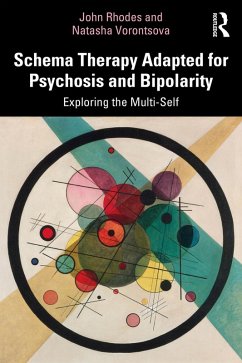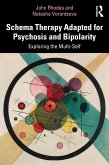The first part of the book presents in-depth qualitative research featuring first-person testimonies that describe the self-states or 'modes' of a person with psychosis or bipolarity. These self-states involve a range of features, such as emotions, thoughts, motivations and behaviours, which manifest as patterns. The second part proposes the adaptation and application of Schema Therapy, a transdiagnostic approach working with emotion and interpersonal functioning for clinical work with these two groups.
Offering unique insights, this text will appeal to a range of practicing clinicians, such as psychologists, therapists, psychiatrists and those with a special interest in psychosis or bipolarity.
Dieser Download kann aus rechtlichen Gründen nur mit Rechnungsadresse in A, B, BG, CY, CZ, D, DK, EW, E, FIN, F, GR, HR, H, IRL, I, LT, L, LR, M, NL, PL, P, R, S, SLO, SK ausgeliefert werden.
Jeffery Young, founder of Schema Therapy and co-director of Schema Therapy Institute of New York and New Jersey
'This book offers something many have long waited for: how to apply schema therapy, and techniques from schema therapy, in chronic psychosis and in bipolar disorder. Schema therapy is a particularly effective treatment for personality disorders and chronic depression. The authors of this book describe how the theory and practice of schema therapy can also be applied to these challenging problem areas. Clinicians will benefit greatly from this work.'
Arnoud Arntz, professor at the Department of Clinical Psychology, University of Amsterdam, Amsterdam, The Netherlands
'A masterful text on the application of Schema Therapy to Psychosis and Bipolarity. Chapters cover the value of a part-selves conceptualisation as well as creative adaptations to change techniques, brought to life by rich clinical accounts. A must read for anyone working in these clinical areas.'
Helen Startup, director of Schema Therapy School, UK









